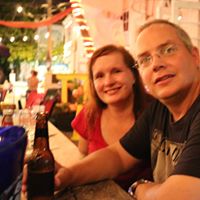Susanne V Hering
age ~78
from Berkeley, CA
- Also known as:
-
- Susanne Vera Hering
- Susanne Kreisberg
- Sheri Ng
- Phone and address:
-
1860 San Ramon Ave, Berkeley, CA 94707
5105246141
Susanne Hering Phones & Addresses
- 1860 San Ramon Ave, Berkeley, CA 94707 • 5105246141
- Kensington, CA
- Kenwood, CA
- Los Angeles, CA
- El Cerrito, CA
- Sonoma, CA
Work
-
Company:Aerosol dynamics1991
-
Position:President
Education
-
Degree:Doctorates, Doctor of Philosophy
-
School / High School:University of Washington1969 to 1974
-
Specialities:Physics, Philosophy
Industries
Research
Resumes

President
view sourceLocation:
935 Grayson St, Berkeley, CA 94710
Industry:
Research
Work:
Aerosol Dynamics
President
Ucla 1979 - 1989
Research Engineer, Department Chemical Engineering
Caltech 1974 - 1977
Postdoctoral Research Fellow
President
Ucla 1979 - 1989
Research Engineer, Department Chemical Engineering
Caltech 1974 - 1977
Postdoctoral Research Fellow
Education:
University of Washington 1969 - 1974
Doctorates, Doctor of Philosophy, Physics, Philosophy University of California, Santa Cruz 1965 - 1969
Bachelors, Physics, History
Doctorates, Doctor of Philosophy, Physics, Philosophy University of California, Santa Cruz 1965 - 1969
Bachelors, Physics, History
Us Patents
-
Continuous, Laminar Flow Water-Based Particle Condensation Device And Method
view source -
US Patent:6712881, Mar 30, 2004
-
Filed:Jan 30, 2003
-
Appl. No.:10/354419
-
Inventors:Susanne Vera Hering - Berkeley CA
Mark Richard Stolzenburg - El Cerrito CA -
Assignee:Aerosol Dynamics Inc. - Berkeley CA
-
International Classification:B01D 4900
-
US Classification:95228, 95288, 96243, 96413, 62617, 73 2804, 7386312, 356 37, 356339
-
Abstract:An apparatus and method for producing a diffusive, continuous laminar flow for particle growth via condensation of vapors with a mass diffusivity near or higher than the thermal diffusivity of the surrounding gas. In an exemplary embodiment, the method uses the condensation of water vapor onto particles suspended in air.
-
High Saturation Ratio Water Condensation Device And Method
view source -
US Patent:7736421, Jun 15, 2010
-
Filed:Oct 5, 2007
-
Appl. No.:11/868163
-
Inventors:Susanne Hering - Berkeley CA, US
Gregory Lewis - Berkeley CA, US -
Assignee:Aerosol Dynamics Inc. - Berkeley CA
-
International Classification:B01D 47/06
-
US Classification:95225
-
Abstract:An apparatus and method for producing a region of vapor super-saturation and particle growth in a laminar flow by surrounding the particle flow with a saturated or super-saturated sheath flow from which vapor diffuses into the aerosol flow. This method is applicable when the mass diffusivity of the condensing vapor is greater than the thermal diffusivity of the carrier gas, such as is the case when water vapor diffuses into air.
-
On-Line Gas Chromatographic Analysis Of Airborne Particles
view source -
US Patent:8088627, Jan 3, 2012
-
Filed:Dec 10, 2004
-
Appl. No.:11/008851
-
Inventors:Susanne V. Hering - Berkeley CA, US
Allen H. Goldstein - Orinda CA, US -
Assignee:Aerosol Dynamics, Inc. - Berkeley CA
The Regents of the University of California - Oakland CA -
International Classification:G01N 30/06
-
US Classification:436161, 422 70, 73 2341, 95 82, 96101
-
Abstract:A method and apparatus for the in-situ, chemical analysis of an aerosol. The method may include the steps of: collecting an aerosol; thermally desorbing the aerosol into a carrier gas to provide desorbed aerosol material; transporting the desorbed aerosol material onto the head of a gas chromatography column; analyzing the aerosol material using a gas chromatograph, and quantizing the aerosol material as it evolves from the gas chromatography column. The apparatus includes a collection and thermal desorption cell, a gas chromatograph including a gas chromatography column, heated transport lines coupling the cell and the column; and a quantization detector for aerosol material evolving from the gas chromatography column.
-
Focusing Particle Concentrator With Application To Ultrafine Particles
view source -
US Patent:8459572, Jun 11, 2013
-
Filed:Oct 22, 2010
-
Appl. No.:12/910705
-
Inventors:Susanne Hering - Berkeley CA, US
Gregory Lewis - Berkeley CA, US
Steven R. Spielman - Oakland CA, US -
Assignee:Aerosol Dynamics Inc. - Berkeley CA
-
International Classification:A62C 5/02
-
US Classification:239 8, 239 1, 239405, 239423, 239424, 239589, 95228, 96413, 7386321, 7386322
-
Abstract:Technology is presented for the high efficiency concentration of fine and ultrafine airborne particles into a small fraction of the sampled airflow by condensational enlargement, aerodynamic focusing and flow separation. A nozzle concentrator structure including an acceleration nozzle with a flow extraction structure may be coupled to a containment vessel. The containment vessel may include a water condensation growth tube to facilitate the concentration of ultrafine particles. The containment vessel may further include a separate carrier flow introduced at the center of the sampled flow, upstream of the acceleration nozzle of the nozzle concentrator to facilitate the separation of particle and vapor constituents.
-
Advanced Laminar Flow Water Condensation Technology For Ultrafine Particles
view source -
US Patent:20120048112, Mar 1, 2012
-
Filed:Aug 25, 2011
-
Appl. No.:13/218393
-
Inventors:Susanne V. Hering - Berkeley CA, US
Gregory S. Lewis - Berkeley CA, US
Steven R. Spielman - Oakland CA, US -
International Classification:B01D 47/05
B01F 3/04 -
US Classification:95228, 261128, 95288, 96243, 96288
-
Abstract:This technology relates to the enlargement by water condensation in a laminar flow of airborne particles with diameters of the order of a few nanometers to hundreds of nanometers to form droplets with diameters of the order of several micrometers. The technology presents several advanced designs, including the use of double-stage condensers. It has application to measuring the number concentration of particles suspended in air or other gas, to collecting these particles, or to focusing these particles.
-
Growth Tube Microchip Electrophoresis System
view source -
US Patent:20120255861, Oct 11, 2012
-
Filed:Sep 27, 2011
-
Appl. No.:13/246608
-
Inventors:Susanne Vera Hering - Berkeley CA, US
Gregory Stephen Lewis - Berkeley CA, US
Steven Russel Spielman - Oakland CA, US
Charles Sherman Henry - Fort Collins CO, US
Scott Douglas Noblitt - Fort Collins CO, US -
International Classification:G01N 27/447
-
US Classification:204453, 204604, 204601
-
Abstract:This technology is a method and apparatus for the semi-continuous measurement of the concentration of constituents of airborne particles which couples a laminar flow, water condensation particle collector to a microfluidic device for assay of particle chemical composition by electrophoresis. The technology has been used for the assay of sulfates, nitrates, chlorides, and organic acids contained in fine and submicrometer atmospheric particles. For these compounds the apparatus and method described is capable of one-minute time resolution at concentrations at the level of micrograms of analyte species per cubic meter of air. Extension to other analytes is possible.
-
Particle Microtrap Screen
view source -
US Patent:62840258, Sep 4, 2001
-
Filed:Oct 5, 1999
-
Appl. No.:9/412441
-
Inventors:Nathan Kreisberg - El Cerrito CA
Susanne V. Hering - Berkeley CA -
Assignee:Aerosol Dynamics, Inc. - Berkeley CA
-
International Classification:B01D 4508
B01D 5000
G01N 100 -
US Classification:95267
-
Abstract:A particle microtrap screen apparatus has an inlet, a jet orifice screen with multiple microjet orifices, and a microtrap plate having multiple microtraps spaced opposite the multiple microjet orifices for entrapping particles entrained by the jets and then released by the gas, and impacting in the microtraps with the energy imparted by the gas as the gas turns and flows between the jet orifice screen and the microtrap impact plate. Collection efficiencies of greater than 90% of particles, about 2 micrometers or larger in size, are experienced with pressure drops of less than 5 millimeters of water. The pressure drop does not increase upon increased loading with particles. The jet orifices have widths of D, about 0. 5 millimeters, with spacing between orifices of about 5D and trap width and depth of about 4D and 2D, respectively, with about 2D spacing between the jet orifice screen and the microtrap plate. Ultraviolet lamps in a plenum on the inlet side of the jet orifice screen illuminate the particle traps through the jet orifices for sterilizing microorganisms within the particle traps.
-
Integrated Collection And Vaporization Particle Chemistry Monitoring
view source -
US Patent:59837322, Nov 16, 1999
-
Filed:Mar 20, 1998
-
Appl. No.:9/044854
-
Inventors:Susanne V. Hering - Berkeley CA
Mark R. Stolzenburg - Albany CA -
Assignee:Aerosol Dynamics Inc. - Berkeley CA
-
International Classification:G01N 1500
-
US Classification:7386322
-
Abstract:An integrated collection and vaporization cell apparatus has a collector and vaporizer cell for collecting airborne particles from sample gas on a collector strip in the cell and a power source connected to the strip for rapidly heating the strip and converting the particles to vapors for analysis without need of removing the strip from the cell. A sample gas director connected to the cell directs sample gas and particles to the collector strip. Particles are collected on the strip by impaction. Rapid heating of the strip vaporizes the particles. A carrier gas flowed into the cell through the director and directly into the cell through a port directs the vapors from the cell to an analyzer port. A measurer connected to the analyzer port measures the amount of vapors and elemental constituents obtained from vaporization of the particles. A humidifier is provided to increase particle collection efficiency.
Name / Title
Company / Classification
Phones & Addresses
President
Aerosol Dynamics Inc
Research · Commercial Research Organization · Research and Development in the Physical, Engineering, and L
Research · Commercial Research Organization · Research and Development in the Physical, Engineering, and L
935 Grayson St, Berkeley, CA 94710
5106499360
5106499360

Susanne Hering
view sourceFriends:
Maxi Postel, Michele Bucher, Florian Eisenhauer, Ira Tan, Patricia Scharpenberg

Susanne Hering
view sourceFriends:
Erica Kristiansson, Annika Schmidt, Greger Nilsson, Vicky Welsby

Susanne Hering
view sourceSusanne Hering.
Googleplus

Susanne Hering
Youtube
Get Report for Susanne V Hering from Berkeley, CA, age ~78





